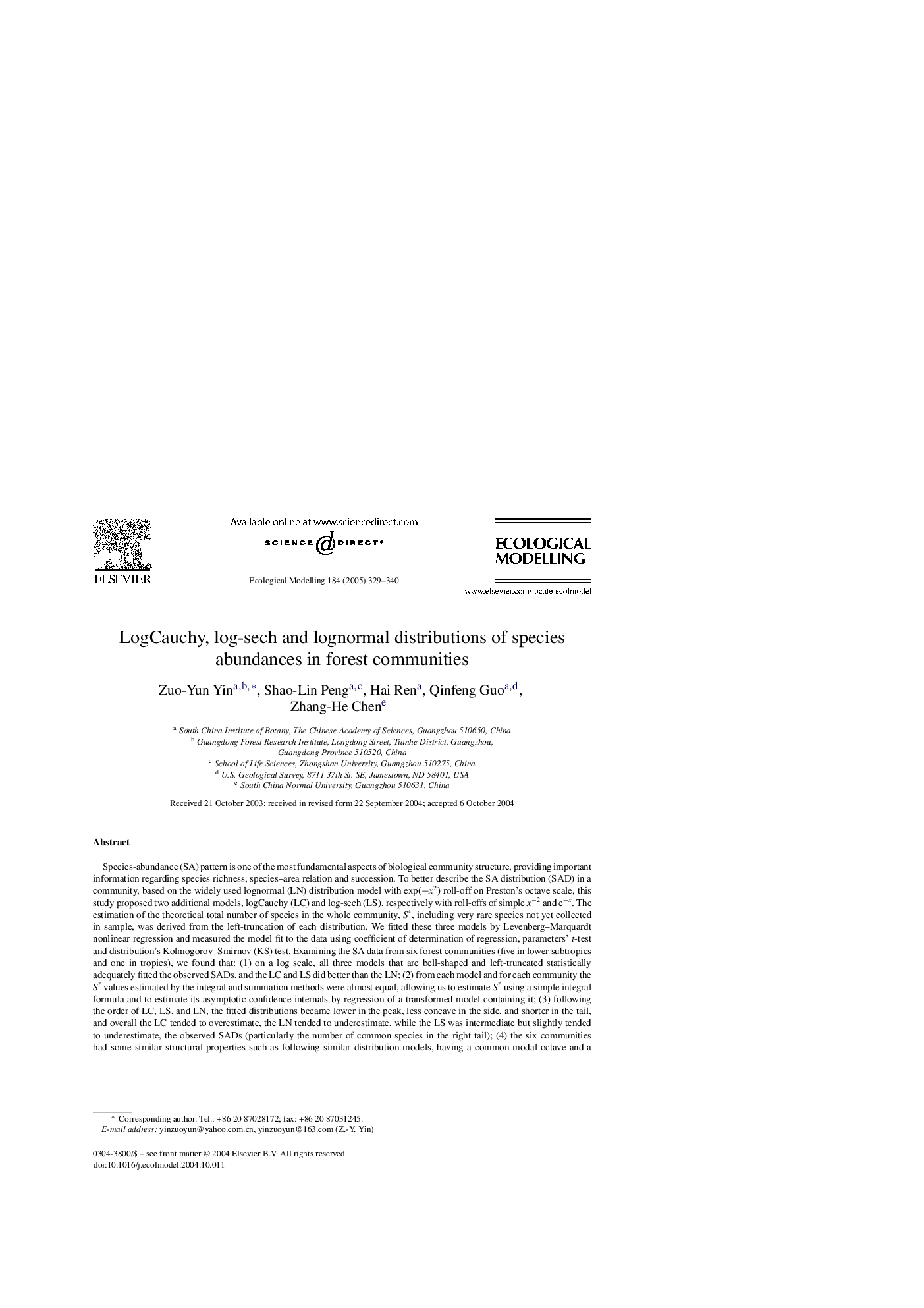| Article ID | Journal | Published Year | Pages | File Type |
|---|---|---|---|---|
| 9443461 | Ecological Modelling | 2005 | 12 Pages |
Abstract
Species-abundance (SA) pattern is one of the most fundamental aspects of biological community structure, providing important information regarding species richness, species-area relation and succession. To better describe the SA distribution (SAD) in a community, based on the widely used lognormal (LN) distribution model with exp(âx2) roll-off on Preston's octave scale, this study proposed two additional models, logCauchy (LC) and log-sech (LS), respectively with roll-offs of simple xâ2 and eâx. The estimation of the theoretical total number of species in the whole community, S*, including very rare species not yet collected in sample, was derived from the left-truncation of each distribution. We fitted these three models by Levenberg-Marquardt nonlinear regression and measured the model fit to the data using coefficient of determination of regression, parameters' t-test and distribution's Kolmogorov-Smirnov (KS) test. Examining the SA data from six forest communities (five in lower subtropics and one in tropics), we found that: (1) on a log scale, all three models that are bell-shaped and left-truncated statistically adequately fitted the observed SADs, and the LC and LS did better than the LN; (2) from each model and for each community the S* values estimated by the integral and summation methods were almost equal, allowing us to estimate S* using a simple integral formula and to estimate its asymptotic confidence internals by regression of a transformed model containing it; (3) following the order of LC, LS, and LN, the fitted distributions became lower in the peak, less concave in the side, and shorter in the tail, and overall the LC tended to overestimate, the LN tended to underestimate, while the LS was intermediate but slightly tended to underestimate, the observed SADs (particularly the number of common species in the right tail); (4) the six communities had some similar structural properties such as following similar distribution models, having a common modal octave and a similar proportion of common species. We suggested that what follows the LN distribution should follow (or better follow) the LC and LS, and that the LC, LS and LN distributions represent a “sequential distribution set” in which one can find a best fit to the observed SAD.
Related Topics
Life Sciences
Agricultural and Biological Sciences
Ecology, Evolution, Behavior and Systematics
Authors
Zuo-Yun Yin, Shao-Lin Peng, Hai Ren, Qinfeng Guo, Zhang-He Chen,
